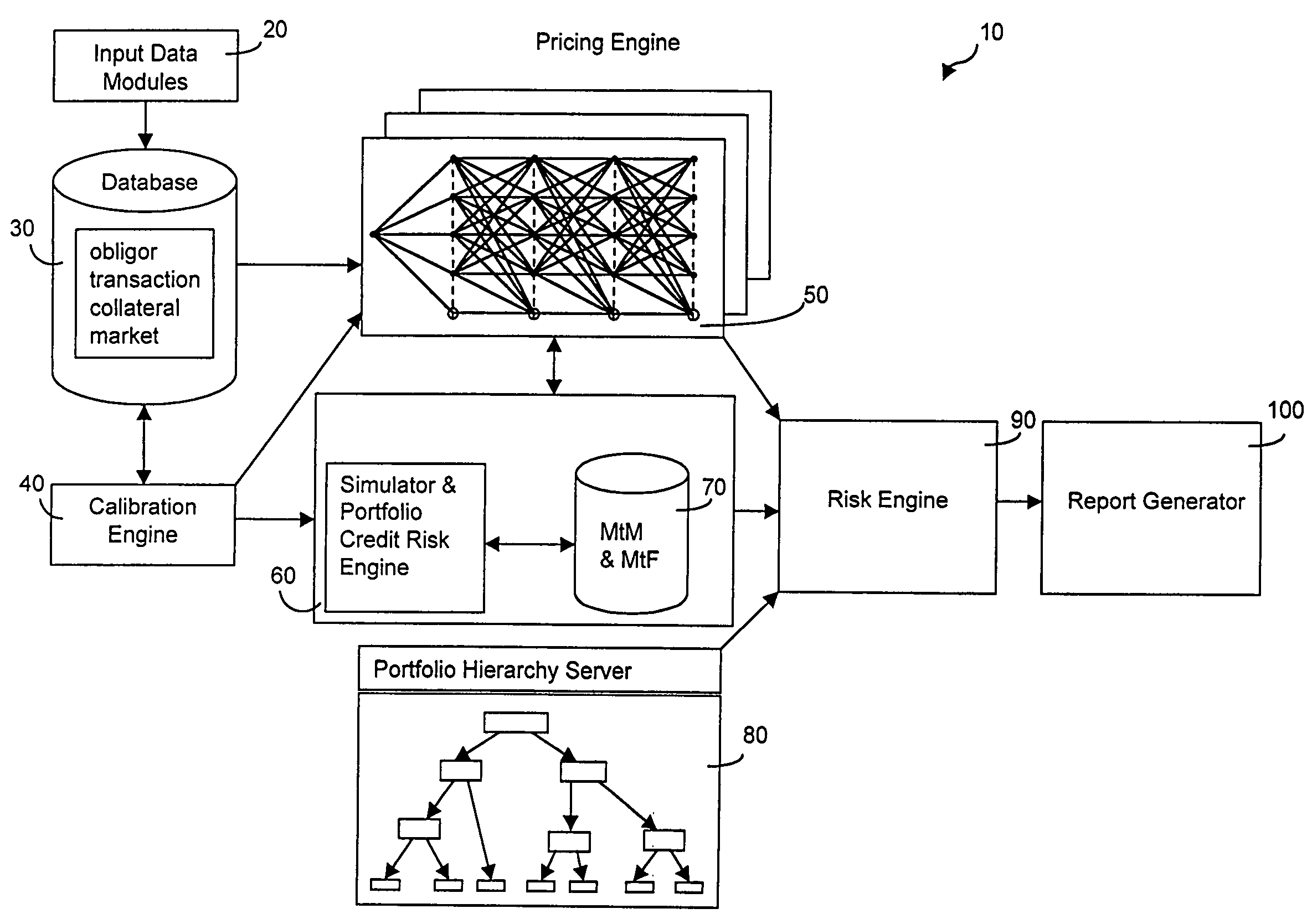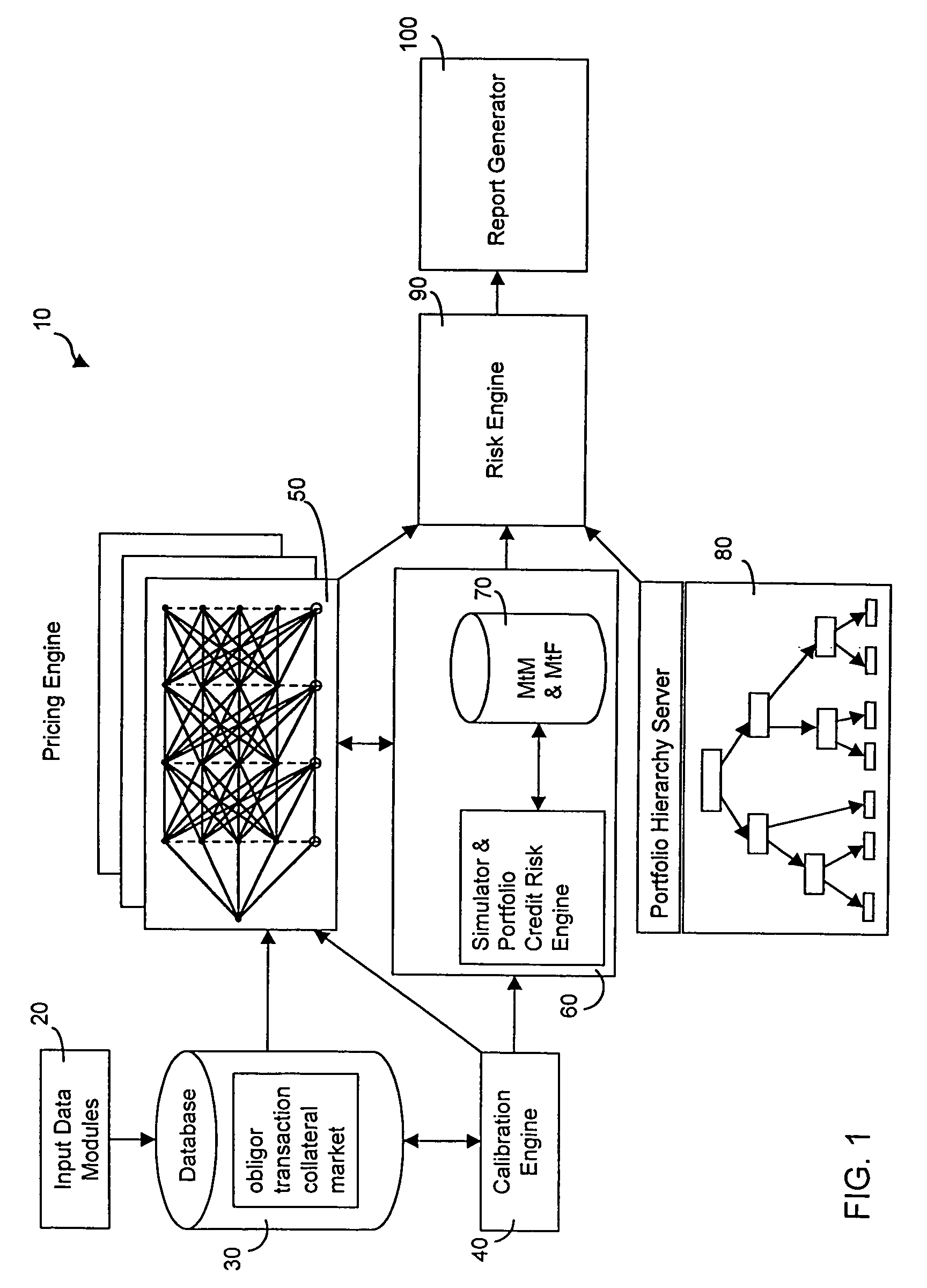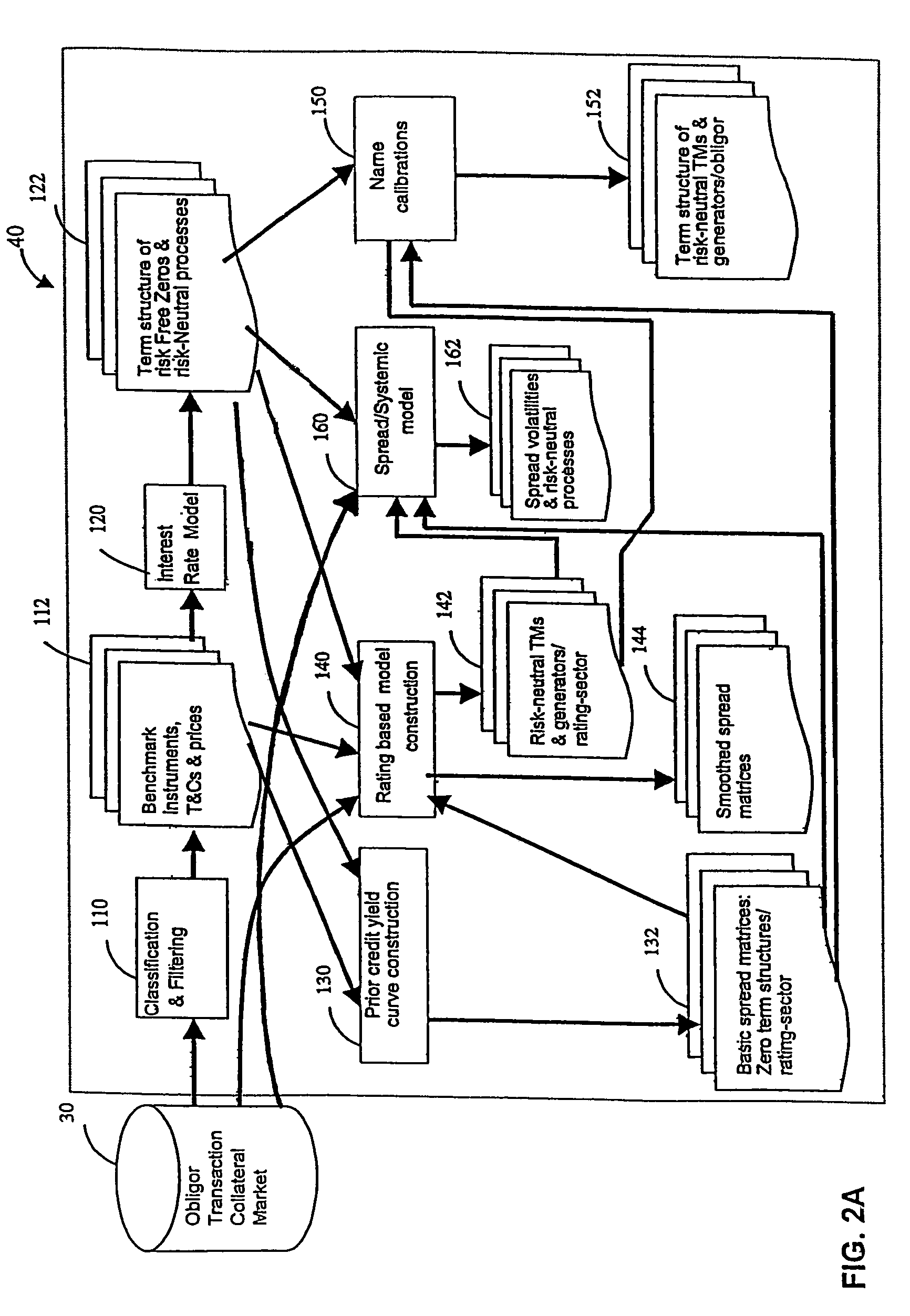System and methods for valuing and managing the risk of credit instrument portfolios
a risk management and portfolio technology, applied in the field of risk management systems and methods, can solve the problems of not accurately reflecting the complex structure of some credit instruments, not teaching how such approaches are to be applied to accurately price complex non-traded credit instruments, and models that have only dealt with minimally
- Summary
- Abstract
- Description
- Claims
- Application Information
AI Technical Summary
Benefits of technology
Problems solved by technology
Method used
Image
Examples
Embodiment Construction
[0028]The present invention relates generally to risk management systems and methods, and is more specifically directed to systems and methods for managing and measuring credit risk.
[0029]The present invention provides for the structuring, pricing, mark-to-market valuation, simulation, risk management, and reporting of a variety of credit instruments. These credit instruments can be of varying complexity (such as loans, for example). They may also be subject to both credit and market risk (e.g., interest rate, foreign exchange risk).
[0030]In preferred embodiments of the invention, ratings-based models are used to price the credit instruments. The theory underlying rating-based models for credit pricing was initially developed in Jarrow et al., “A Markov Model for the Term Structure of Credit Risk Spreads”, Review of Financial Studies, Vol. 10, No. 2 (1997), and summarized in Lando, D., “Some Elements of Rating-Based Credit Risk Modelling”, Advanced Fixed-Income Valuation Tools (Wile...
PUM
 Login to View More
Login to View More Abstract
Description
Claims
Application Information
 Login to View More
Login to View More - R&D
- Intellectual Property
- Life Sciences
- Materials
- Tech Scout
- Unparalleled Data Quality
- Higher Quality Content
- 60% Fewer Hallucinations
Browse by: Latest US Patents, China's latest patents, Technical Efficacy Thesaurus, Application Domain, Technology Topic, Popular Technical Reports.
© 2025 PatSnap. All rights reserved.Legal|Privacy policy|Modern Slavery Act Transparency Statement|Sitemap|About US| Contact US: help@patsnap.com



